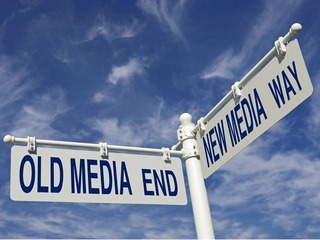A look at which companies might go public in 2018
Companies like Airbnb, Uber and Dropbox have been highly anticipated IPOs for years
Read more...
Editor's Note: Our annual Vator Splash Spring 2016 conference is around the corner on May 12, 2016 at the historic Scottish Rite Center in Oakland. Speakers include Nigel Eccles (CEO & Co-founder, FanDuel), Andy Dunn (Founder & CEO, Bonobos), Mitch Kapor (Founder, Kapor Center for Social Impact); Founders of NextDoor, Handy, TubeMogul; Investors from Khosla Ventures, Javelin Venture Partners, Kapor Capital, Greylock, DFJ, IDG, IVP and more. Join us! REGISTER HERE.
Last year, after Business Insider was purchased by German publishing giant Axel Springer, I wrote a story about how new media had taken over, with deals that are worth more than their old media counterparts. It's a new media world, for better or for worse, and we are watching the establishment get taken over in real time. It's fascinating to watch.
There's a catch, though. While, yes, new media is having a moment, as always, things may not be so simple. In fact, data out from CB Insights shows that at least a few of those companies might be highly overvalued.
Take Business Insider, for example, which was acquired for $343 million, valuing the company at $442 million. However, it's price-to-revenue multiple, according to the data, is 14.7x.
BuzzFeed raised a $200 million funding round In August from NBCUniversal, for which investing in new media companies seems like part of its ongoing strategy to stay relevant in a rapidly shifting landscape.
The company is valued at $1.5 billion, at a multiple of 15x what its revenue is.
The company that most exemplifies this is Vox, which also raised $200 million from NBCUniversal, at a $1 billion valuation. It's multiple stands at 16x.
Of course not all new media companies are being given such high valuations. In fact, the company with the highest valuation is Vice, which is worth $4 billion after raising $200 million (that's a pretty popular figure for these companies, it seems) from Disney in December.
Despite that huge valuation, Vice has a price-to-revenue multiple of 8x, half of what Vox is seeing.
And what of Gawker, the company that has put new media back into the spotlight thanks to the lawsuit over Hulk Hogan's sex tape that cost it $115 million? That company may very well be going out of business soon, but it is actually one of the most reasonably valued new media companies of all. At $276 million, its valuation is 5.5x its revenue.
Now let's look at some of the old media companies, and it seems to be the opposite situation, where they often seem to be undervalued.
Some of the less-well known media companies that havs been acquired include Mergermarket which was bought by BC Partners from Pearson for $624 million in 2013. Its multiple is only 3.8x its revenue. There's also the South China Morning Post, bought by Alibaba for $266 million last year, at a multiple of 1.7x.
Forbes, valued at $475 million, and The Economist Group, valued at $1.46 billion, both have a multiple of 2.9x.
The old media company that is most undervalued, by far, though is The Washington Post, which was bought by Amazon’s Jeff Bezos for $250 million in 2013.
That company has a startlinging low price-to-revenue multiple of 0.4x.
In the last couple of quarters there has been a retraction in the market, as what many saw as a potential bubble started to deflate. That doesn't mean that smaller bubbles haven't remained in certain segments.
(Image source: salon.com)
Companies like Airbnb, Uber and Dropbox have been highly anticipated IPOs for years
Read more...Who were the winners and losers and which ones rose
Read more...Who were the winners and losers and which ones rose with the record-setting market?
Read more...